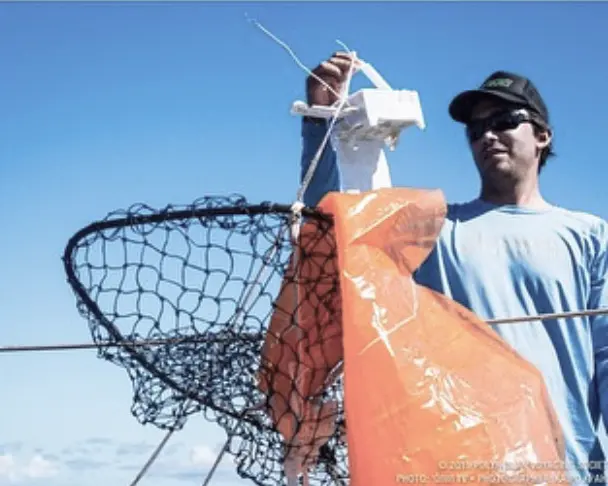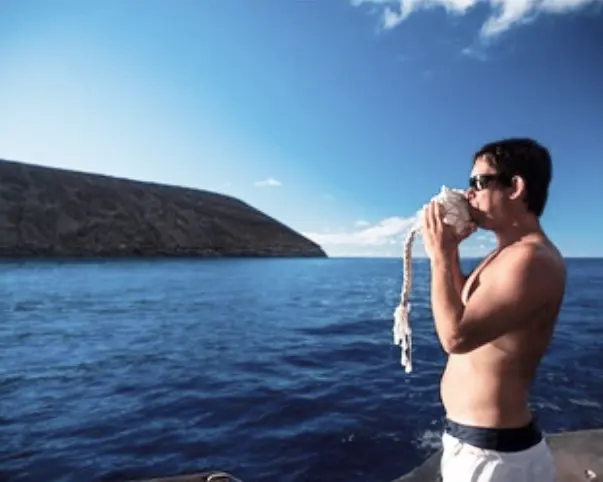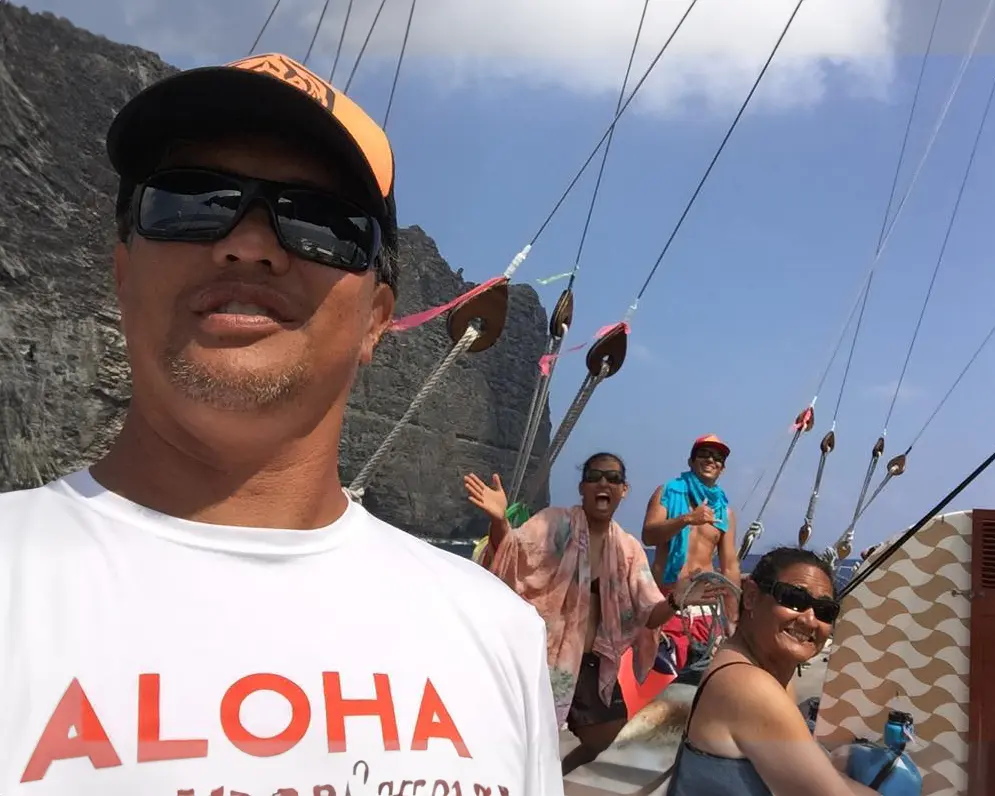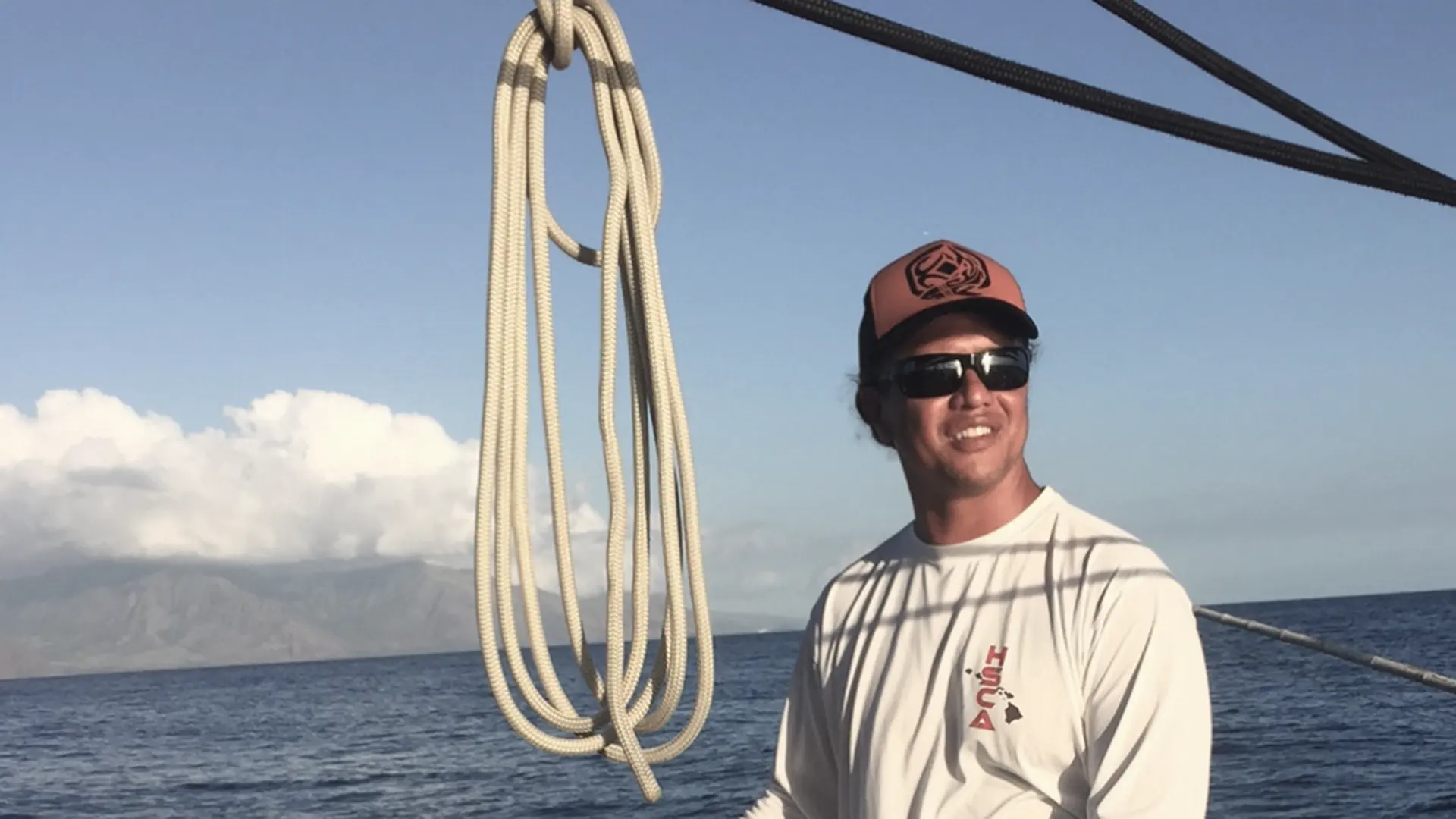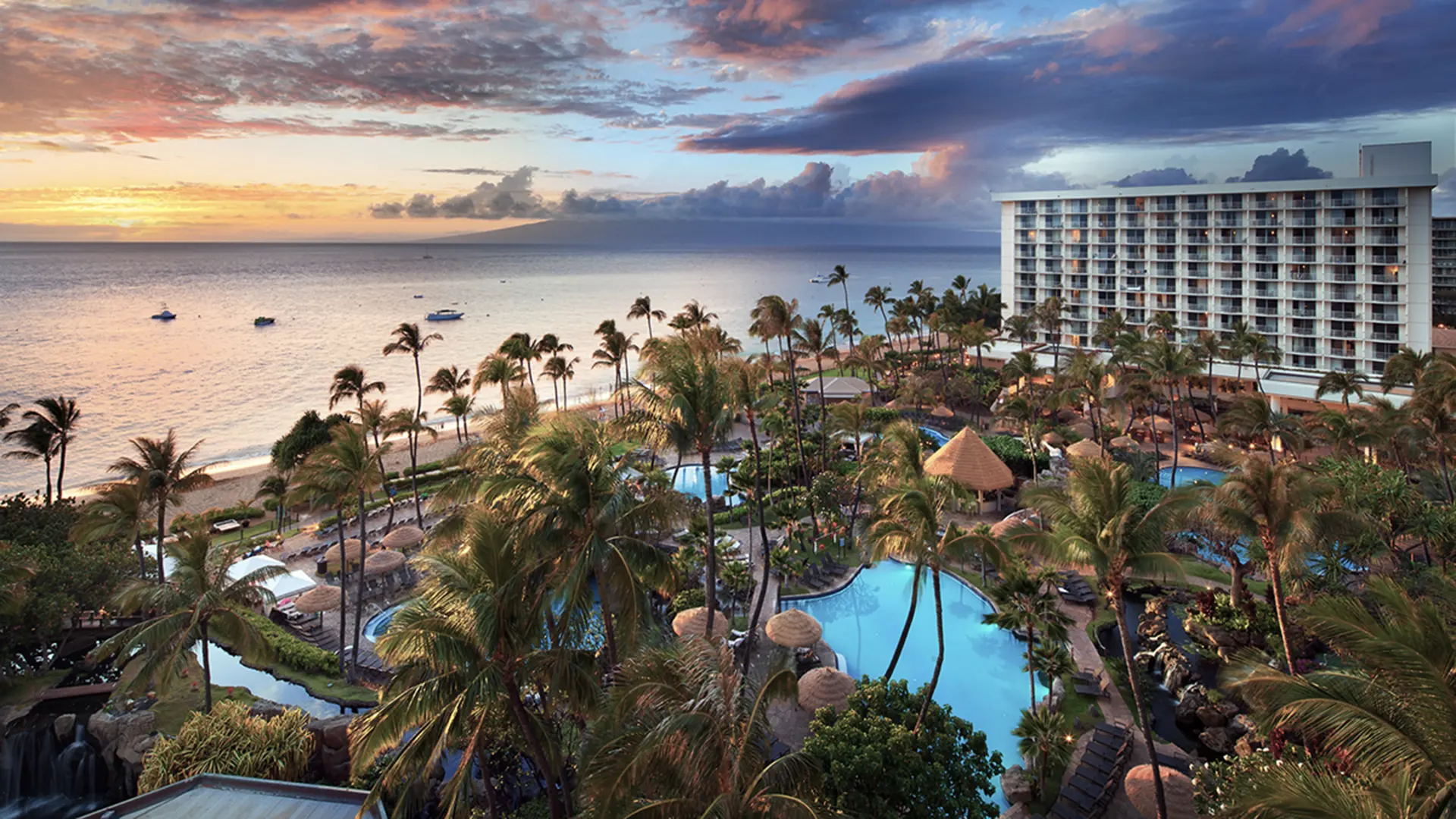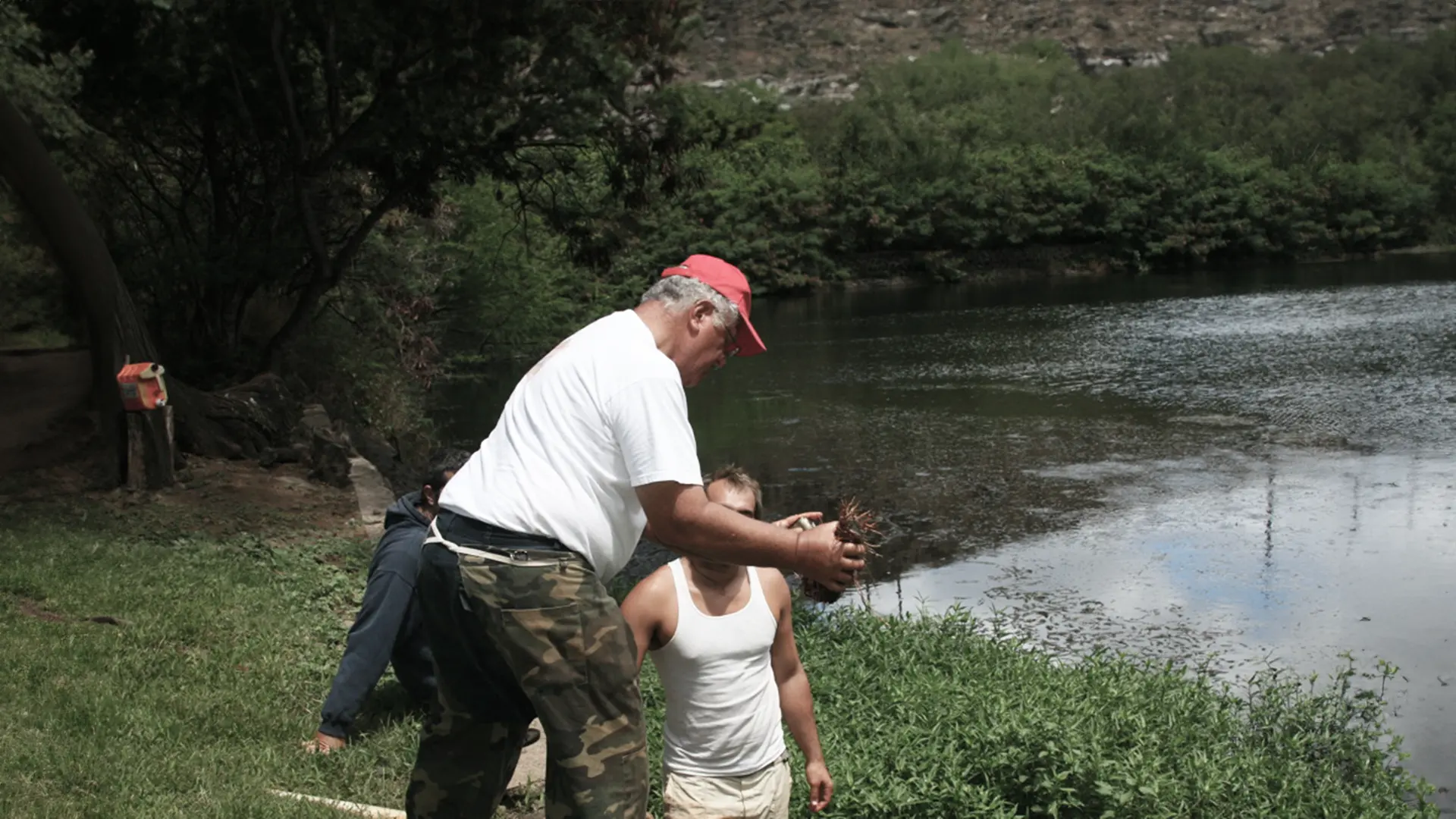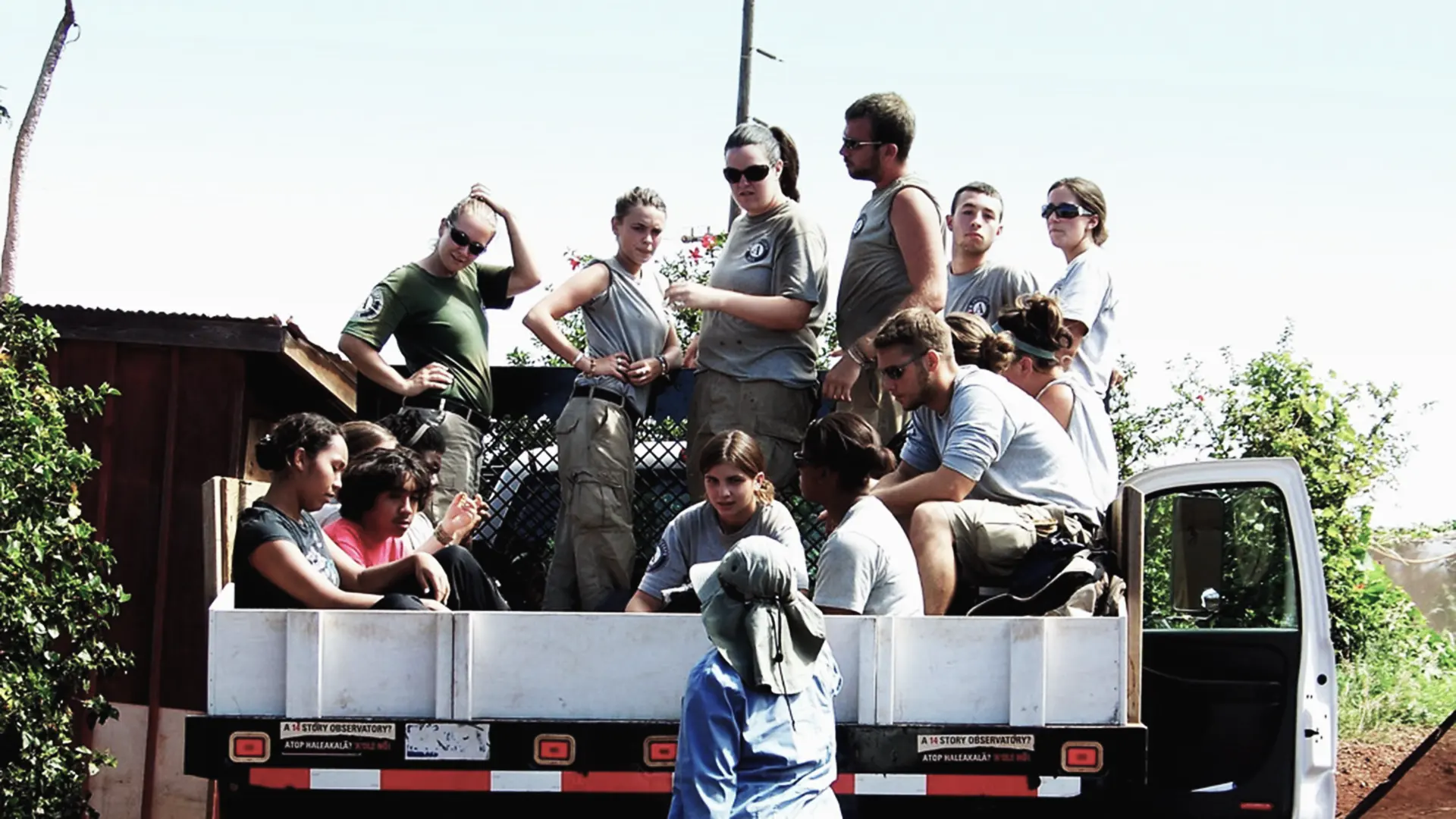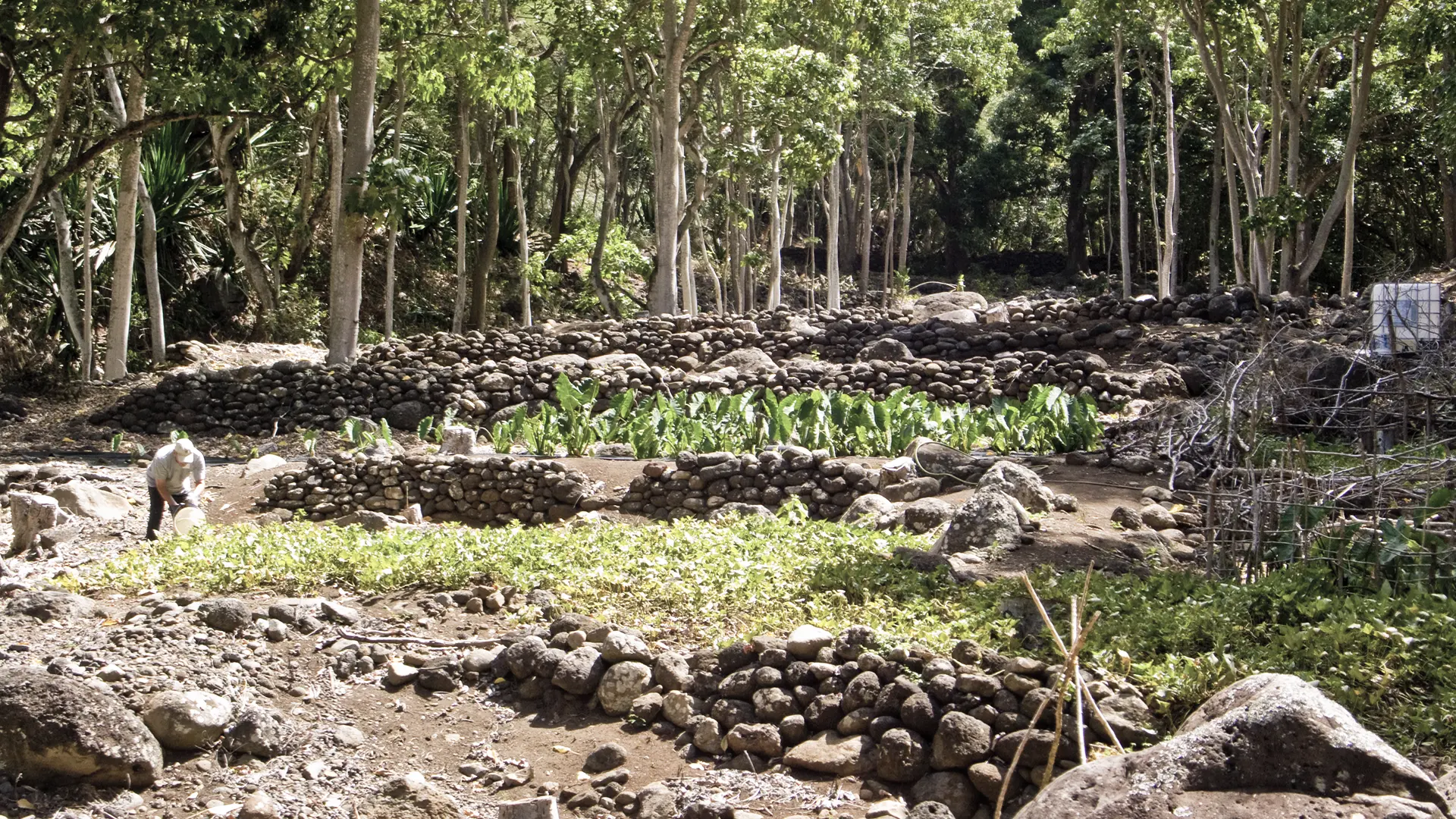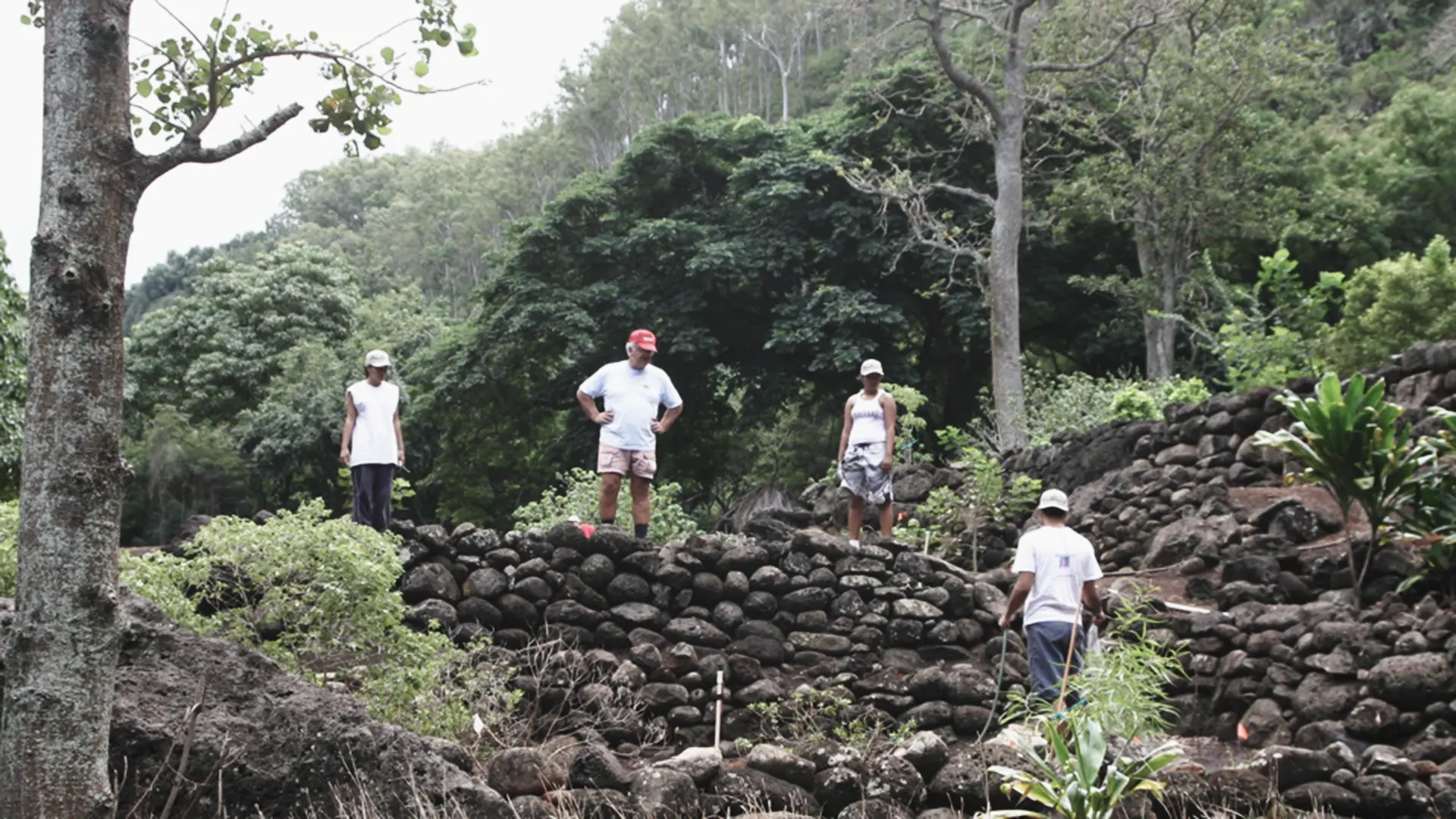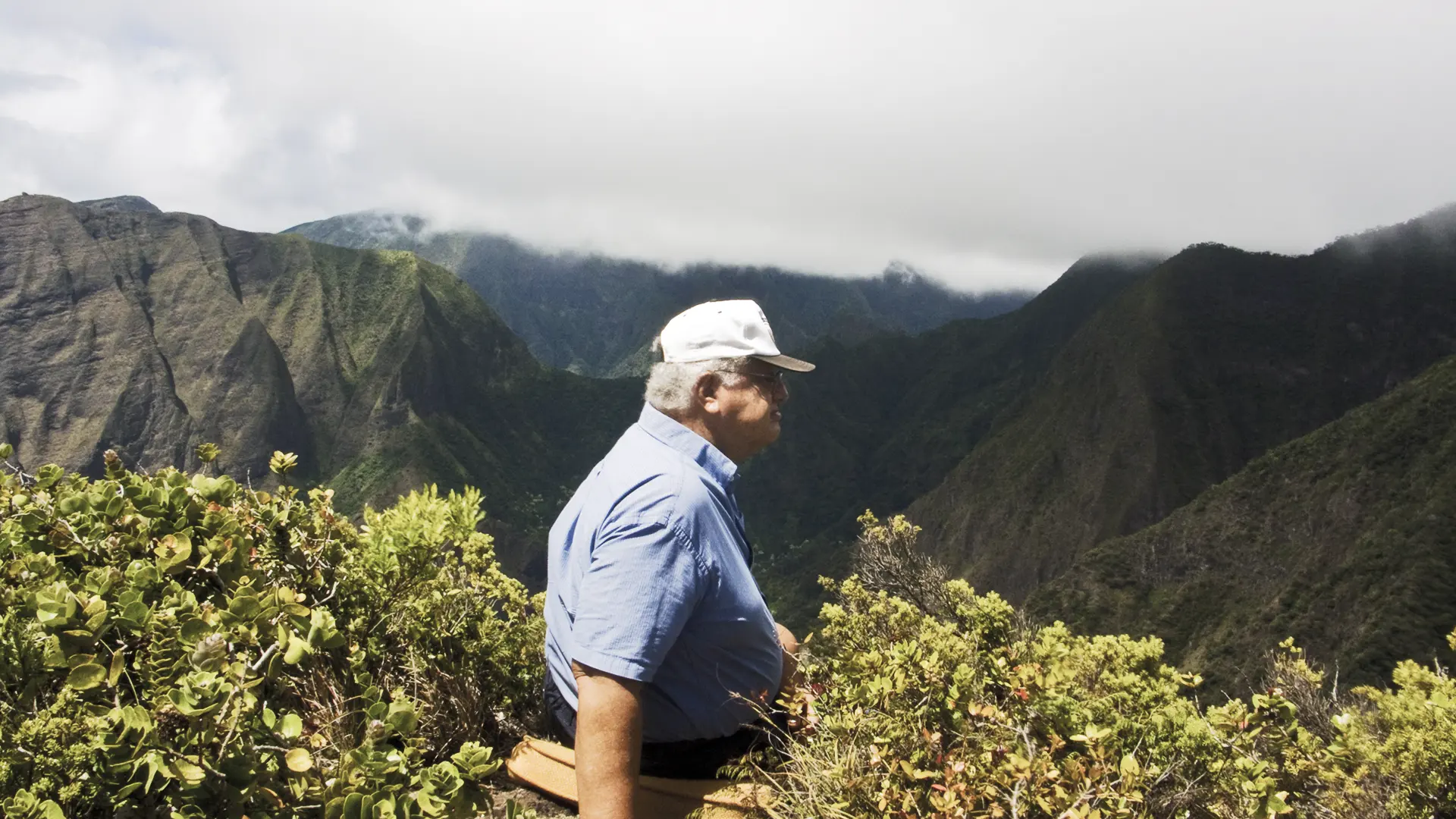Words by Sky Schual • Addional photos by Kaipo Ki’aha • The Nature Conservancy • Polynesian Voyaging Society • Hikianalia
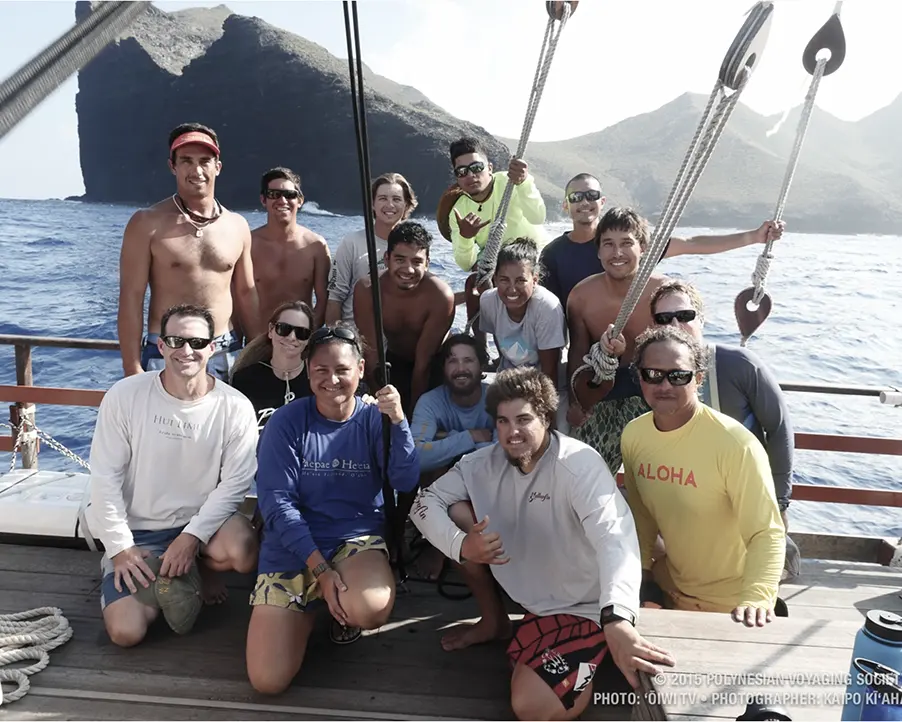
Ekolu Lindsey joins the The Nature Conservancy and the Polynesian Voyaging Society crew aboard the Hikianalia voyaging canoe traveling 500 miles to the Papahanaumokuakea Marine National Monument in the Northwestern Hawaiian Islands.
When Maui Cultural Lands president Ekolu Lindsey first considered the idea of traveling 500 miles in a voyaging canoe, he had some doubts—mainly the worry of becoming seasick!
“I had to overcome some fears,” Ekolu said. “But I was excited to try to make a difference, to help find some solutions on how we can protect our marine resources going forward.”
The crew aboard Hikianalia was headed for the Papahanaumokuakea Marine National Monument in the Northwestern Hawaiian Islands, seeking to conduct scientific research near the island of Nihoa. Ekolu was selected as part of the marine monitoring team, joining staff from The Nature Conservancy along with crewmembers of the Polynesian Voyaging Society.
“Our tasks were similar to the monitoring we do here at home: to count fish, take photos of the ocean floor, measure habitats,” Ekolu says. “Our goal was to create a baseline index that we can use to see how our reef compares to a pristine reef, as well as to see how the reef might change in future.”
Stocked with provisions, the Hikianalia headed out early morning June 28. It was Captain Kaleo Wong’s first journey in the role of captain, although he had crewed many voyages in the last two decades. Also on board was Russell Amimoto, who was serving on this voyage as part of The Nature Conservancy’s marine monitoring team. In the past, Russell had captained Hokule‘a, which is a sister vessel to Hikianalia.

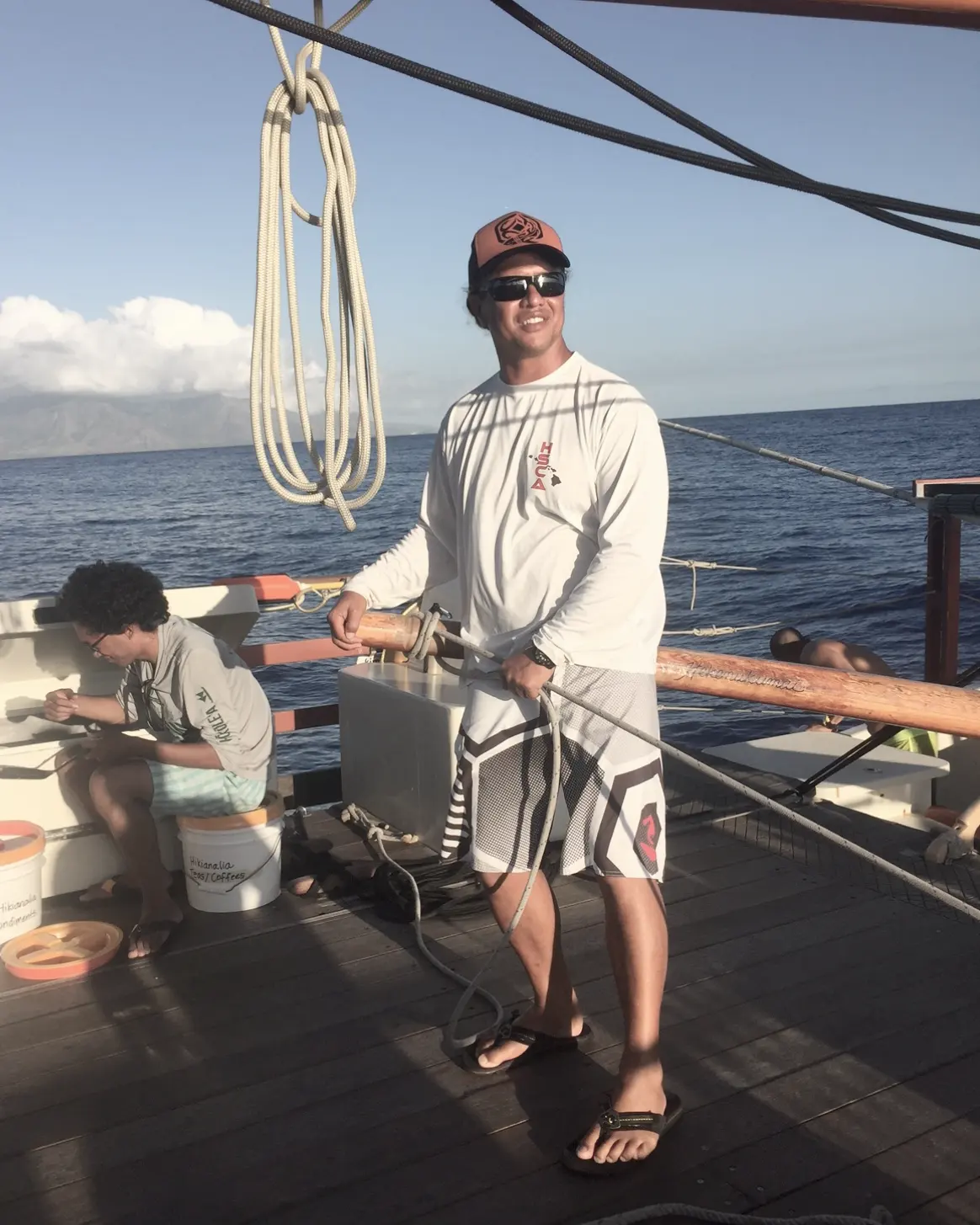
The 72-foot-long double-hulled Hikianalia was built like a traditional wa‘a (canoe), but also contains some modern equipment like solar panels, lights, radio and electric motors.
After three days and two nights of smooth sailing, the crew arrived at Lehua island off the coast of Niʻihau. Cultural protocol was conducted upon nearing the site.
Two days later, on July 3, they reached the wahi pana (sacred place) of Nihoa. “The scenery was amazing, just sheer cliffs that dropped off into the ocean,” Ekolu says. “We didn’t see as many fish as I expected, but it was an incredible experience.”
Team members surveyed reef fish habitat, completed opihi monitoring and offered mele (chants) and ho‘okupu (gifts) to honor the islands. Ekolu and his fellow voyagers were able to exchange many ideas on how to malama, or care for, and better manage Hawai‘i’s marine resources.
Hikianalia sailed past Kaua‘i to return home on July 6. Ekolu came home to Maui the next day.Mahalo for all of the support!
As far as the seasickness, Ekolu says he was fine. He wore a patch behind his ear, but the calm ocean was the real blessing.
Related Posts
